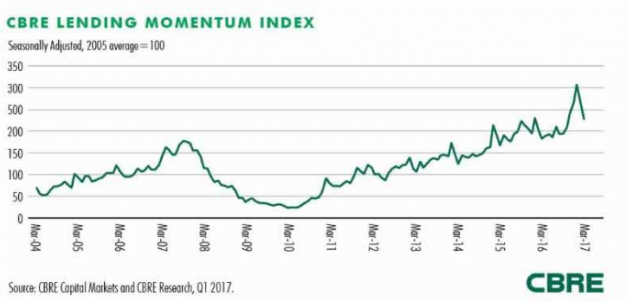3 Advantages of Improved CRE Stress Testing Practices

Achieve Greater Returns with Less Risk: C&I Lending
April 19, 2017
How Community Banks Can Increase Loan Growth with MarketPlace Lending
May 30, 2017
Despite the recent rise in interest rates, borrowers in need of commercial real estate loans have remained optimistic thanks to positive economic outlooks. According to the CBRE Lending Momentum Index, CRE lending activity in March was up by 25.2% year-over-year.
However, there continues to be concern over the amount of new construction projects that have cropped up in recent years. As a result, the Federal Reserve has asked banks to make CRE risks a bigger focus this year by implementing better stress testing practices and to develop a strategy that details how they would fare if CRE prices dropped by 35 per cent and apartment values collapsed.

Stress tests are an effective method that financial institutions can use to ensure that they are compliant with regulations. By implementing these types of tests on a regular basis and tailoring them to meet specific market conditions, banks and private lenders can realize safer, smarter, and more profitable lending decisions. Additionally, regular stress testing can help financial institutions avert CRE risk, improve risk ratings, develop a more focused strategy and ensure that adequate capital levels are maintained.
1. Avert Risk
By creating formulas that identify when commercial property are of a certain type — such as a multifamily, hotel or office, for example — or within a particular geographic location, loan officers are alerted to any questionable occurrences or risk factors that might not otherwise be immediately evident.
2. Improve Risk Ratings
A well-designed stress test that takes into consideration the risk characteristics displayed by the property or the borrower allows the financial institution to position itself so it can more advantageously mitigate any adverse situations that might arise before they do so.
3. Implement a More Focused Strategy
By utilizing the results of a series of stress tests, a better understanding of the patterns of risk that might be found in a particular segment of their loan portfolio can be used to derive a more focused strategy. Using these results can help financial institutions recognize when their portfolio might be saturated in terms of concentration within a certain geographical area or type of commercial real estate.
Another prong of this more focused strategy can include current loans that have the potential to be problematic. Requiring an additional layer of scrutiny, such as updates on income or regular reviews of rent documentation, can help financial institutions uncover any potential problem early on in the process rather than when it might be too late to intervene.
As a tool, stress testing is both versatile and incredibly useful in the daily decisions that all financial institutions must make in order to remain viable. Robust risk management is the key to any financial institution’s longevity and stress testing is a streamlined and intuitive method of delivery. CLOUDecision Complete provides banks and other financial institutions with the ability to customize their own unique data points to ensure comprehensive loan evaluation at all times. Learn more about available software packages by signing up for a free demo.
